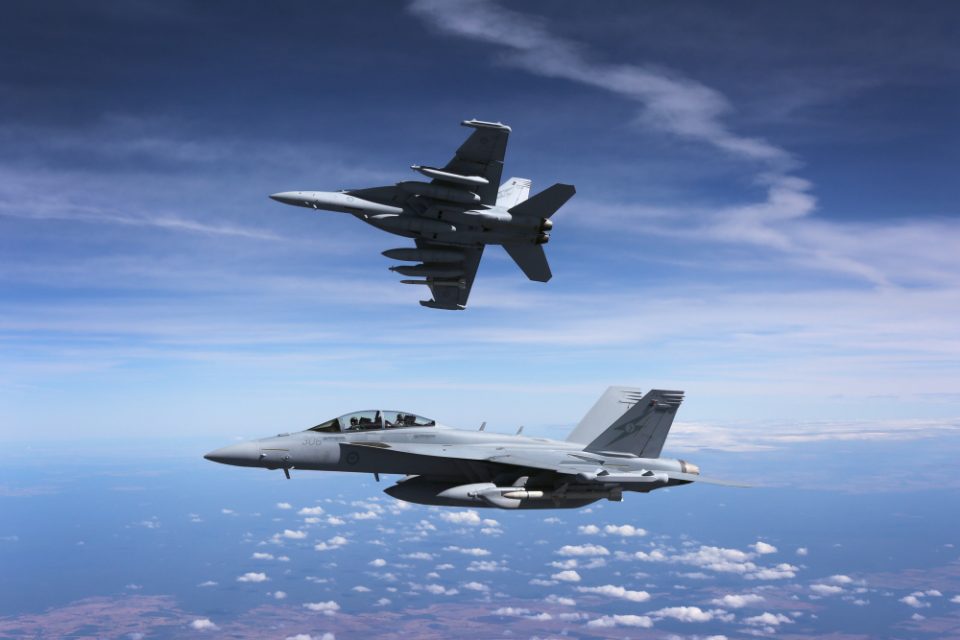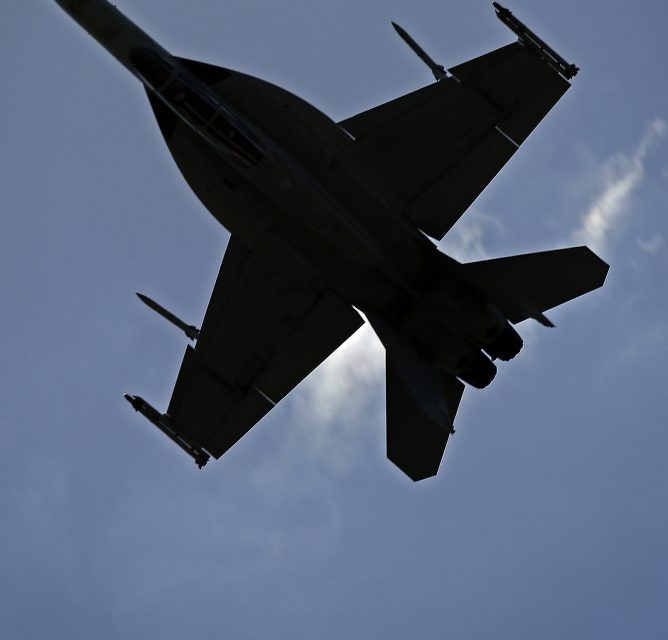2017-04-19 By Robbin Laird
During my visit to Australia in April 2017, I had a chance to meet and talk again with Air Marshal Leo Davies, Chief of Staff of the Royal Australian Air Force.
During the Avalon Air Show, the RAAF released its long-term strategy document, Air Force Strategy: 2017-2027.
I will publish an article soon about that document and its core arguments about the way ahead.
When the document was released, Air Marshal Davies highlighted how central he saw the evolving joint context to defense modernization.
“Of the five vectors (of strategic development discussed in the strategy document), CAF said the capabilities which would require the most work and fundamental cultural changes were joint warfighting and people.
“I don’t believe we, as an Air Force, understand how joint we need to be. We have come a long way – we talk a lot about joint, but I am not sure we are culturally able to shift from doing Air Force stuff first.
“I would like the Air Force in a joint context to begin to put the joint effect before our own Air Force requirements.”[1]
This perspective was highlighted by Air Vice-Marshal (Retired) John Blackburn as a key element for shaping the next phase of development for the Australian Defense Force, namely, shaping a joint force by design, rather than pursuing an a la carte connection after the fact effort.
“Cultural change, as reflected in CAF’s strategic plan narrative, is required to prioritize the integrated force outcomes over the individual force priorities where appropriate.”
We started the interview by discussing precisely the cultural change aspect of transitioning to a fifth generation warfare approach.
Air Marshal Davies: When aircraft first arrived at the battlefield in the very early days of World War I, having just begun to learn how to fly in fact, it was the, “But it’ll scare the horses” type mindset from the cavalry in particular which limited thinking.
“But it didn’t take long even for the cavalry to work out that this thing could really make a change in warfighting.
“It was not the particular airplane, not what model you flew, but the advent of air power as an option for the battlefield became the, “Wow! How do we get more of that?”
“Fifth generation is as dramatic as that.
“We are trying to at least be prepared for and begin to understand that it is real is 5th generation methodology.
“It is as big a step as it was at the advent of air power in World War I.
“But we are not, in my view, the best at taking such big steps.
“We tend to fail to see that there is a step to be taken, and keeping doing what we have done well in the past.
“But more importantly, we revert to a Maslow type hierarchy. “Can I touch it? Can I see it? Can I be part of it? Does it fulfill me both in a technological sense, but as importantly, in a mental and emotional sense?”
“Because as an Air Force we recognize that we need to take a major step forward, we are confronting what it will be mean to have a fifth generation operating model, rather than just acquiring a new airplane.
“It is challenging, but you can’t meet the challenge if you do not recognize the strategic opportunity.
“We put in motion “Plan Jericho” precisely to shake up thinking and to get on with crafting the journey of becoming a fifth generation air force.
“We have to learn that there is a new way of doing business, and if we didn’t show some clear recognizable, understandable, and air force-involved steps along the way, it would’ve always been just a little bit too far.
“We’re demonstrating that it is possible by the rethink associated with Plan Jericho.
“We have acted under the assumption that Plan Jericho is a compass not a roadmap.
“The new strategy focuses on the five vectors of change and if we follow those vectors and implement the changes we can succeed in becoming a fifth generation air force and a powerful asset for the ADF in terms of enhanced joint effects.”
Question: It is clear that the challenge is not so much to connect a force via a network to become integrated as it is about training, shaping and empowering a 21st century network of 21st century warfighters.
And from taking to many of your key officers responsible for introducing or operating the new platforms, it is clear that they get the point it is not about simply operating a new platform, it is about becoming an integrated fifth generation combat force.
How do you best support this transformation?
Air Marshal Davies: “A key benefit from the Plan Jericho approach is reshaping the language.
“It is not about how does this new platform fit into the force as it is, it is about how does this new platform enable the force to fight the way we need to be able to in the future?
“It has to be realistic but in a sense the reality we are looking at is not just the Air Force as it has fought in the past and present, but the Air Force as it vectors towards the future fight.
“If you don’t do this you will be only discussing and debating platforms in the historical combat space.
“And when we come to new platform decisions, we are positioning ourselves to ask the right question of the services: How does a particular platform fit how we will need to fight in 10 year’s time? Is the Navy or the Army or the Air Force entitled to that particular capability choice if it doesn’t fit that criteria?”

[1] “This is an investment in our future – CAF,” Air Force (February 8, 2017), p. 4.
The slideshow highlights aircraft at the 2017 Avalon Air Show and are credited to the Australian Ministry of Defence.




